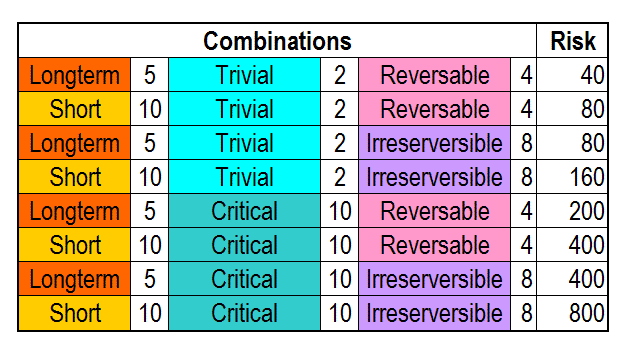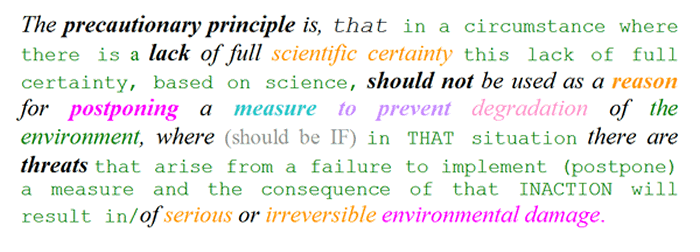Background
Environment Law
Back in the 1980s when environmental practitioners, of which I was one, scientists and a section of the community was expressing serious concerns at the absence of adequate legislative control over activities that were having significant impacts on the environment, Parliaments were forced to move to drafting legislation which was seen to address these concerns.
In Queensland, where I have intimate knowledge, the Clean Waters Act 1971 proclaimed at the beginning of the rein of one of the more well-known State Premiers of Australia Joe Bjelkie-Petersen had, when it was replaced by Queensland’s first Environmental Protection Act in 1994, the dubious distinction of, during it’s 27 years of life, never having been responsible for delivering a single successful prosecution for the contamination of the Queensland’s waterway.
This despite massive areas of land clearing, the development of the massive Galilee coal basin which stretched inland from Bowen to west of Rockhampton (one of the great coal basins of the world) plus the massive growth in the sugar industry with their large petrochemical industries supplying enormous quantities of synthetic nutrients and biocides to tens of thousand of hectares of rain soaked lands.
The 1980’s legislation that was finally proclaimed in the mid 1990’s was designed to placate the concerned while at the same time catering for the needs of those sectors that were the source of these activities.
It is a testimony to the truth of this statement above that since the ‘new age’ environmental legislation was proclaimed that by every single measure, the environmental standard on the planet has continued to decline.
The procreators of the legislation would I am sure want to claim that the situation now would be worse, the decline faster and the degree greater without their laws. But as there is no control against which to measure the veracity of this claim, we are stuck with the only measurable scenarion, which is that the legislation failed to halt the progression of the degradation.
Precautionary Principal
The precautionary principle was intended to be a ‘proactive’ imperative (funnily enough, that’s the nature of a precaution) and was introduced into environmental management in the early 1980s
The principal as it was first proposed could colloquially be quoted as having the over arching caveat that “If you don’t know how something will turn out - don’t do it in until you do.
The older reader among amongst you may remember
- the old aphorism — "an ounce of prevention is worth a pound of cure"; or
- the medical dictum — “first do no harm”.
The principle was developed as a social responsibility for regulators to protect the public and their environment from exposure to harm in situation where, science had not been applied or the application of science had so far not provide a confident answer and consensus.
This principal was to be used to refuses an approval or freeze an activity until science provided the required level of evidence about the outcome, demonstrating no need for concern.
Since the formal inception of the precautionary principal in 1982 no less than 11 iterations have nationally evolved to suit the particular needs of different audiences and consumers.
The numerous iterations are said to belong to 2 varieties the “Strong” and the “Weak” varieties.
The ‘Strong’ represents the version that retained the ethos of the original advocates cited above,
Example of the Strong: You may not dump radioactive wastes in metal drums in the Pacific Ocean until you know that this action will not pose serious and irreversible environmental damage
Whereas the ‘Weak’, as you would naturally expect, is a watered down version of that original advocacy.
The Weak versions allow for the approval of action when scientific uncertainty exists provided there are not a threat of serious or irreversible outcome.
The problem with this version is however, the scientific uncertainty component.
Because science
-
can be uncertain of a Degree of an IPACT;
-
can also be uncertain of Probability of an IPACT;
-
can also be uncertain of Duration of an IPACT; and
-
can also be uncertain of the Prognosis from the IPACT
The combinations can be daunting to say the least and the real weakness in the "Weak"version is that it only prohibits or requires the amelioration once the variables of outcome have been determined

Federal Court Decision
The situation we shall now look at involves the Adani Project and the Australia’s legislation and the Adani case [QUD 1017-2015] using the ‘Weak’ variety.
Before we proceed though it is important to get your head around the fact that the appeal cannot not be about the decision that the Minister made it can only be successful if it demonstrates that the process by which the Minister arrive at his decision was flawed.
Section 391(2) of the Environment Protection and Biodiversity Conservation Act 1999 [EPBdCA] provides
The precautionary principle is that lack of full scientific certainty should not be used as a reason for postponing a measure to prevent degradation of the environment where there are threats of serious or irreversible environmental damage.
We need to reconstruct this back into conversational language so we can better understand what it has to says

I know, I know, it is still not abundantly clear as to exactly what the government is getting at but the way the lawyers crafted the legislation, probably at the insistence of politicians, resulted in the law turning out to be the exact opposite to the initial proposals regarding Best Practice in Environmental Management.
The precautionary principle was never intended to be a ‘reactive’ imperative —do some thing to stop degradation , rather than the ‘proactive’ — don’t do anything that may start degradation.
The legislation is squarely aimed at addressing current situation not preventing a future one from arising as in the Adani case.
Law courts have struggled with this statutory definition of the precautionary principle since day one, which the cynic in me says is exactly the outcome Parliament intended.
So now let’s turn our minds to the Adani case
You’ve got to find it ironic that the first ventilation of the precautionary principle internationally was in the 1987 United Nations Montréal Protocol on Atmospheric Contamination and yet here we are in 2016 still facing a situation where a lawyer is saying that he is reasonably confident that a Minister did not apply the precautionary principle to the consideration of issuing an approval to undertake an activity where the use of product, the subject of the activity, contains all the elements that the precautionary principle was intended to address, BUT is not considered to be a fatal flaw in process of assessment.
Judge Griffith (JG) formed the opinion that the Federal Minister Hunt (Minister) only considered the implications of the precautionary principle in doing his assessment of the “direct impacts” of the Adani project. [175]
By reason therefore the Minister did not consider the implications of the precautionary principle in relation to the “indirect impacts” such as the global impacts of the greenhouse gas emissions of the coal.
JG supports this reasoning by advising that in his opinion it was doubtful that the Minister was saying that he had considered the implications of the precautionary principle in doing his assessment of the greenhouse gas emissions because there was no explicit reference in the Ministers Statement of Reasons addressing the precautionary principle when specifically considering the aspect of greenhouse gas emissions from the coal [175]
DECISION
JG agreed with the opinion of the Minister that the absence of this lack of consideration of the precautionary principle (in the context of future greenhouse gas emissions from the coal) does not mean that the approval decision is invalid as a consequence of the Minister's process. [176]
REASONS
The reasons underpinning JG adopting the Ministers view are set out as follows
| A | JG acknowledges the value of a comprehensive analysis by Preston CJ (Preston) of a precautionary principle in a New South Wales legislation in the (Hornsby) case which had a definitions of the precautionary principle substantially similar in construct to the EPBdCA. [177]
|
| B | Three judges of the same court (Federal Court) in an appeal case Walker, were also impressed with Preston’s analysis [177]
|
| C | The Federal Court has held in several cases that, for the purposes of s 391 of the EPBdCA, the precautionary principle is only enlivened in circumstances where there are identified threats of serious or irreversible environment damage - But the Minister did not find that there were any threats of serious or irreversible damage to the Great Barrier Reef which would be caused by the combustion emissions release of 86 million tonnes of CO2-e from Adani Coal. [184] - AND accordingly under Preston's analysis of the definition of precautionary principle, no identified threat = no responsibility to apply precautionary principle.
|
JG's understanding of the Preston’s analysis.
|
|
| D | Alternatively, the Minister need only apply the precautionary principle to the extent it is consistent with the other provisions of this EPBdCA. The Minister made a determination that under s 527E, the combustion emissions of 86 million tonnes of CO2-e from Adani coal are not an impact under the EPBdCA.
|
THEREBY :
There you have it. |
|
However It is easy to understand how the courts have struggled in the past in dealing with the precautionary principle — for a number of reasons.
Which all combine to go to the issue at the Decision - Which seems incomprehensibly inane ACF Appealed but the Appeal failed. | |